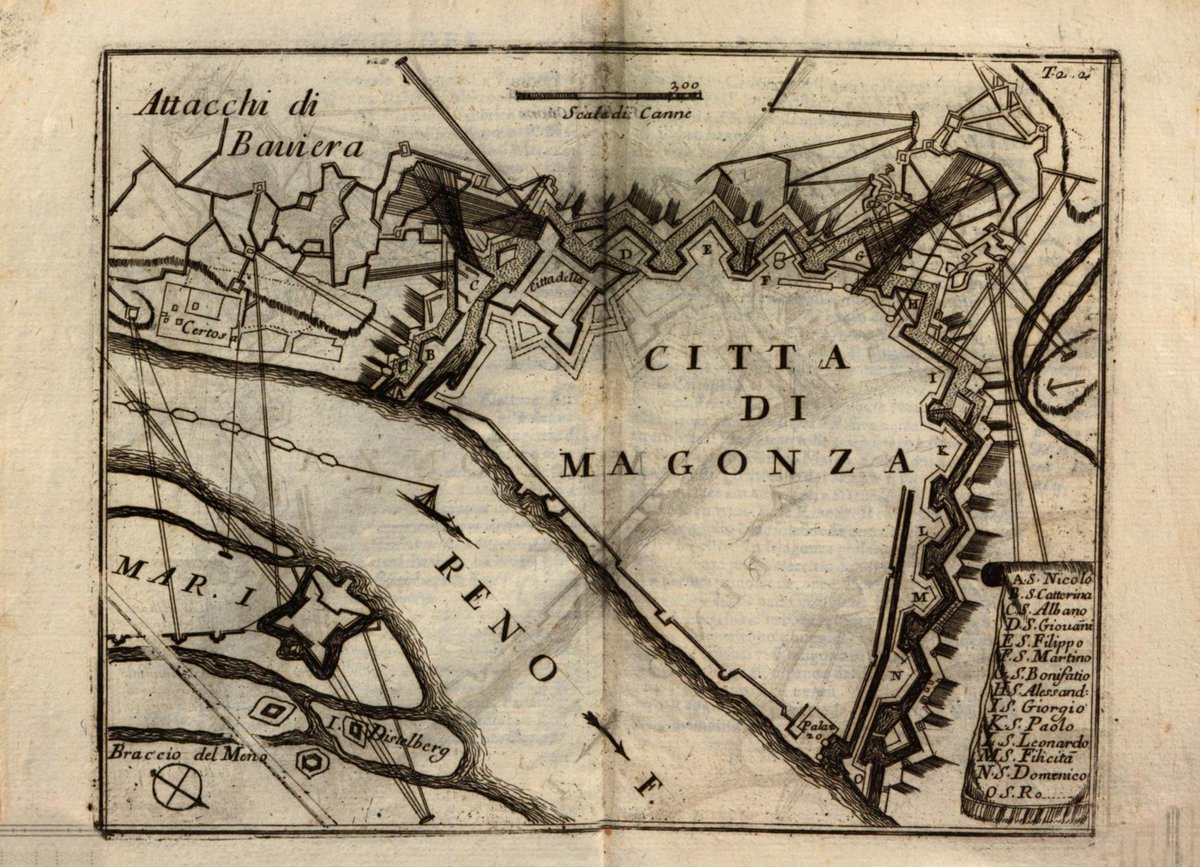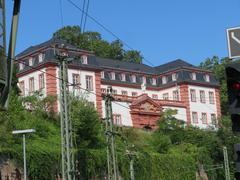
Mainz Citadel Visiting Hours, Tickets, and Historical Sites Guide
Date: 15/06/2025
Introduction
Perched atop Jakobsberg hill, the Mainz Citadel (Zitadelle Mainz) is a remarkable landmark that weaves together over 2,000 years of European history, military architecture, and cultural life. From its Roman roots as part of Mogontiacum to its Baroque transformation and current role as a vibrant venue for community events, the citadel stands as a testament to Mainz’s enduring strategic significance and resilience. Whether you are seeking practical information about Mainz Citadel visiting hours, tickets, guided tours, or simply want to immerse yourself in the rich tapestry of the city’s history, this guide provides everything you need to plan an enriching visit.
Table of Contents
- Introduction
- Historical Overview
- Architectural Features
- Cultural Significance
- Visiting Information
- Main Attractions
- Visitor Experience
- FAQ
- Conclusion and Call to Action
- References
Historical Overview
Roman and Medieval Foundations
The site of the Mainz Citadel dates back to Roman times, when Mainz (then Mogontiacum) served as a major military and administrative center. Remnants of a Roman amphitheater and the Drususstein—a cenotaph honoring General Nero Claudius Drusus—still stand as enduring symbols of the city’s ancient roots (spottinghistory.com; happytowander.com). By the medieval era, Jakobsberg hill was home to a Benedictine abbey, marking the area both as a spiritual landmark and a point of vulnerability outside the city’s main defenses.
Schweickhardtsburg and Baroque Transformation
In the early 17th century, the Schweickhardtsburg fortress was built to strengthen Mainz’s defenses, later evolving into the present-day Baroque citadel. Prince-Elector Johann Philipp von Schönborn oversaw its conversion to a bastioned fortress, completed in 1660, which preserved the Drususstein and medieval St. Jacobs Abbey within its walls. The Baroque commander’s residence, constructed above the main entrance, reflects the blending of military function with architectural elegance (spottinghistory.com; forte-cultura.net).
Citadel in War and Peace
The citadel played a pivotal role during the 1793 Siege of Mainz, World Wars, and subsequent military occupations. It housed troops, served as a prisoner-of-war camp, and offered shelter to civilians during air raids. Despite damages, many original structures have survived, bearing witness to centuries of conflict and adaptation (spottinghistory.com).
Postwar Era and Modern Use
After WWII, French forces occupied the site until 1955. Today, the citadel houses municipal offices, the Historical Museum of Mainz, and hosts a variety of cultural events. Efforts by local organizations continue to preserve and revitalize the site for public benefit (mainz-tourismus.com).
Architectural Features
Strategic Layout
The citadel exemplifies early modern military architecture with its star-shaped bastioned design, providing overlapping defensive fields of fire. Its elevated position offers sweeping views of the Rhine and Mainz’s cityscape (forte-cultura.net; europeupclose.com).
Notable Structures and Restoration
- Gatehouse & Bastions: Named after saints and historical figures, these robust Baroque features are highlights for visitors.
- Underground Passages: Used for storage, escape, and as air raid shelters during WWII.
- Drususstein: A direct link to Mainz’s Roman origins.
- Garrison Museum: Showcasing models and artifacts from the site’s military past (forte-cultura.net).
- Restoration: Ongoing efforts led by Initiative Zitadelle Mainz e.V. focus on sustainable preservation and increasing public accessibility (mainz-tourismus.com).
Cultural Significance
The citadel is not only a monument to Mainz’s resilience but also a hub for community life, hosting festivals, concerts, markets, and educational programs. It is a prominent venue for the annual Open Ohr Festival, the Citadel Festival, and the Christmas Market, drawing both locals and international visitors (forte-cultura.net; mainz-tourismus.com).
Visiting Information
Hours and Tickets
- Visiting Hours: The citadel grounds are generally open daily from 9:00 AM to 6:00 PM (sometimes 8:00 AM to 8:00 PM in summer or for special events). Always check the official website for seasonal updates.
- Tickets: Entry to the citadel grounds is free. Guided tours, museum access, and special events may require tickets, typically ranging from €4 to €12, with concessions for children, students, and groups (zitadelle-mainz.de).
Accessibility
- Wheelchair Access: Main areas, including the museum and some ramparts, are accessible. However, certain underground passages and steep sections may pose challenges.
- Public Transport: The citadel is a short walk from Mainz Römisches Theater train station and is easily reached by tram, bus, and bike.
- By Car: Limited parking is available nearby, especially during major events.
Guided Tours and Special Events
- Guided tours (in German and English) explore the citadel’s history, architecture, and underground passages.
- Thematic tours and special experiences, such as historical costume tours and wine tastings, are available.
- Major events include open-air concerts, festivals, art fairs, and seasonal markets (forte-cultura.net; inkwiremagazine.com).
Travel Tips and Nearby Attractions
- Best Time to Visit: Spring to autumn for pleasant weather and full access; special events add to the experience.
- Nearby Attractions: Mainz Cathedral, Gutenberg Museum, Roman Theatre, Rhine promenade, and Volkspark are all within easy reach.
- Dining: Food stalls are available during events; Old Town offers abundant dining options.
Main Attractions
Drususstein
A Roman funerary monument dating to around 9 BC, the Drususstein is one of the oldest surviving Roman structures north of the Alps and remains a focal point within the citadel (Wanderlog).
The Bastions and Barracks
The star-shaped bastions—Alexander, Drusus, Johann, and Matthias—offer panoramic views and insight into 17th-century military engineering. The Baroque gate and former barracks now serve cultural and municipal purposes.
Panoramic Views and Green Spaces
Enjoy sweeping views of Mainz and the Rhine from the ramparts, as well as tranquil gardens and lawns for relaxation (STR Specialist).
Visitor Experience
Accessibility
Most outdoor areas are accessible, though some interior and underground spaces may be difficult for those with mobility challenges. Assistance is available on request.
Facilities and Amenities
- Restrooms and seating are available.
- Information boards in German and English.
- Café “Citadelle” offers refreshments during events.
Safety and Seasonal Highlights
- Wear sturdy shoes for cobblestone paths and uneven terrain.
- Spring and summer offer lush scenery and active events; autumn is quieter and colorful; winter provides a peaceful, reflective experience.
Frequently Asked Questions (FAQ)
Q: What are the Mainz Citadel visiting hours?
A: Generally 9:00 AM to 6:00 PM, with possible seasonal variations. Confirm on the official website.
Q: Is entry to the citadel free?
A: Yes, entry to the grounds is free; guided tours and events may require tickets.
Q: Are tours available in English?
A: Yes, tours are offered in both German and English.
Q: Is the site accessible for wheelchair users?
A: Main areas are accessible, but underground passages and some steep sections may not be.
Q: How do I book a tour?
A: Book online or via email at [email protected].
Q: What events take place at the citadel?
A: Annual highlights include the Open Ohr Festival, Citadel Festival, Christmas Market, and various cultural and educational programs.
Conclusion and Call to Action
The Mainz Citadel is a living monument that seamlessly blends history, architecture, and vibrant community life. Its preserved bastions, iconic Drususstein, extensive underground passages, and lively event calendar make it an essential destination for anyone interested in European or German history. To make the most of your visit:
- Check the latest visiting hours and event details on official platforms (Mainz Citadel Official Site, Mainz Tourism, FORTE CULTURA).
- Book guided tours for deeper insight into the site’s rich heritage.
- Download the Audiala app for interactive audio guides and updates.
- Follow social media channels dedicated to Mainz’s historical and cultural sites.
Experience a journey through time and enjoy one of Germany’s most captivating historical landmarks.
References
- Mainz Citadel: A Historic Fortress and Top Mainz Historical Site to Visit, 2024, Spotting History (spottinghistory.com)
- Visiting Mainz Citadel: Hours, Tickets, History, and Travel Tips, 2024, Forte Cultura (forte-cultura.net)
- Exploring the Mainz Citadel: Visiting Hours, Tickets, and Historical Sites, 2024, Wanderlog (Wanderlog)
- Practical Visitor Information, 2024, Zitadelle Mainz Official Website (zitadelle-mainz.de)
- Mainz Tourism Official Site, 2024 (mainz-tourismus.com)
- Europe Up Close: Mainz Germany, 2024 (europeupclose.com)
- STR Specialist: Ultimate Travel Tips for Mainz, 2024 (strspecialist.com)
- Inkwire Magazine: Mainz Concerts and Events, 2024 (inkwiremagazine.com)



































































































































